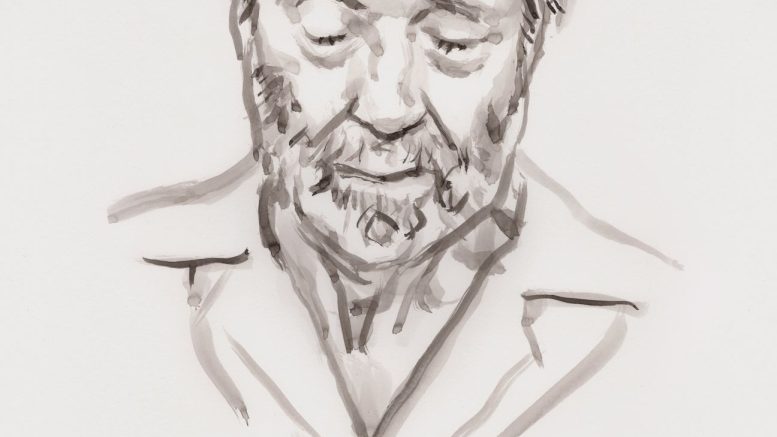Cliff Eyland, an enormously prolific artist and former professor at the U of M school of art, is the subject of a new documentary titled Cliff: a Portrait of an Artist. The film is currently touring festivals, having just earned the award for best Manitoban director at the Gimli International Film Festival.
Directed by U of M fine arts alum Adam Brooks, Cliff is a dreamy, reflective work that follows a series of interviews Eyland gave during the years before his death in 2020.
Brooks and Eyland first met at the U of M in 1998, where Eyland was one of Brooks’s painting professors.
“He was always drawing on file cards and seemed totally aloof,” Brooks said in an email interview, explaining that they did not become close until the production of the film.
Those little file cards that swallowed Eyland’s attention in class were his signature format.
Displays of his file-card-sized paintings have dotted galleries and public libraries across the country, including an installation in the lobby of Winnipeg’s Millennium Library. Each painting is its own tiny world, but they have often been put together as massive installations of hundreds or even thousands of paintings, making them overwhelming and imposing.
This dichotomy of small and large in Eyland’s work echoes his character as it appears in the film. He comes across as remarkably humble and affable, but also as an effortlessly deep and spiritual thinker.
In fact, Eyland never seems precious or pretentious, expressing his big, serious artistic ideas with a warmth and approachability that is also evident in his work.
Brooks wrote that he made the film in an attempt to better understand Eyland as a person, “hoping to learn his secret to living fearlessly — how to be happy, optimistic, generous and kind.”
Furthermore, he wanted to introduce strangers to a singular man and artist, and to give those who knew him a bit of extra time with him.
Within a memorable sequence of the film, Eyland talks about a trip he took to Jamaica as a teenager to work at a boy’s home run by the Anglican Church, an experience he found to be both alienating and discouraging.
During this time, he met an epileptic teen artist who went by Joe Clarence, and who made great work despite having no training, no encouragement and no supplies. Having discovered that he “couldn’t be a saint” and that “the world was hopeless” Eyland chose to pursue art, coming at it from an almost absurdist angle — if he could not help the suffering, why not try to create beauty in the world through art?
This sequence is partially visualized using some of the many animated passages found throughout the film. Done by Brooks and Drue Langlois, these bits are lovely visual additives that complement the film’s talking head footage, archival photographs and paintings.
The music is also a highlight, with contributions from famed folkie Dan Bern as well as Unicity and Ray Fenwick.
The film is still currently on the festival circuit. And though Brooks has acknowledged its limited commercial potential, he plans to eventually release it through Vimeo or YouTube.
With the documentary, fans and former students of Eyland will be granted another chance to spend time with him, even if those moments are only in the bittersweet memory of film.
As of publication, Cliff: A Portrait of an Artist is streaming on the Winnipeg Film Group’s Vimeo channel.


